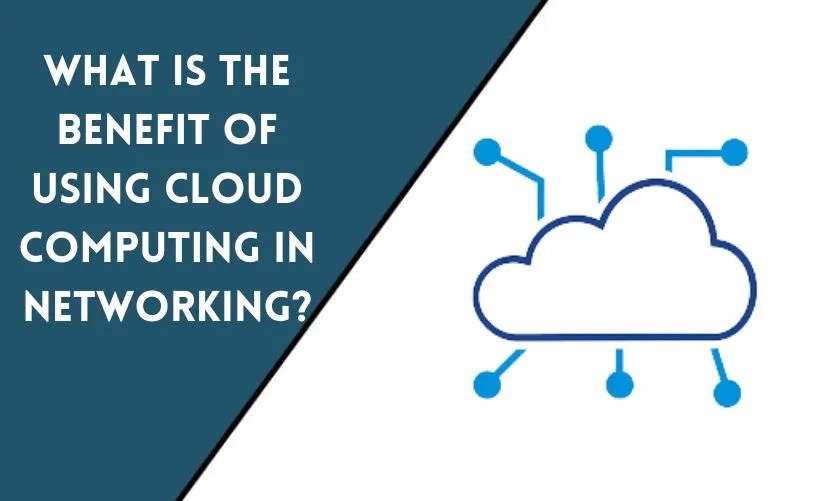
In today’s digital age, where technology is advancing at a rapid pace, cloud computing has emerged as a game-changer in various industries. It has revolutionized the way businesses manage their data, applications, and networking infrastructure. Cloud computing offers numerous benefits, and its impact on networking is particularly significant. In this article, we will explore the advantages of using cloud computing in networking and how it can enhance the efficiency and scalability of your network infrastructure.
Introduction to Cloud Computing
Cloud computing refers to the delivery of computing services, including servers, storage, databases, networking, software, analytics, and more, over the internet. It allows organizations to access and utilize shared computing resources on-demand without the need for extensive on-premises infrastructure. Cloud computing provides a scalable and flexible solution that can adapt to the changing needs of businesses.
The Intersection of Cloud Computing and Networking
Cloud computing and networking are intrinsically connected, with cloud services relying on robust networking infrastructure to function effectively. Networking forms the backbone of cloud computing, facilitating the transfer of data between the cloud provider’s data centers and end-user devices. By leveraging cloud computing in networking, businesses can unlock several benefits that can optimize their operations and drive growth.
Improved Scalability and Flexibility
One of the significant advantages of cloud computing in networking is the ability to scale resources quickly and efficiently. Traditional networking infrastructures often struggle to handle sudden surges in traffic or fluctuating resource demands. Cloud computing enables businesses to scale their networking resources up or down seamlessly, ensuring optimal performance during peak times and cost savings during low-demand periods. This scalability allows organizations to adapt to evolving business needs without investing in additional hardware or facing downtime.
Cost-Effectiveness and Reduced Infrastructure Requirements
Cloud computing offers cost savings by eliminating the need for extensive on-premises networking infrastructure. Instead of investing in expensive networking equipment and maintenance, businesses can rely on cloud service providers to manage and maintain the underlying infrastructure. This significantly reduces upfront costs and ongoing expenses, making cloud computing a cost-effective solution for networking needs. Additionally, the pay-as-you-go pricing model of cloud services allows businesses to align their networking costs with actual usage, optimizing their budget allocation.
Enhanced Reliability and Disaster Recovery
Cloud computing provides robust reliability and disaster recovery capabilities to networking infrastructure. Cloud service providers operate multiple data centers in different geographic locations, ensuring redundancy and high availability. In the event of a hardware failure or natural disaster, data and applications can be quickly restored from backups, minimizing downtime and data loss. This level of reliability and disaster recovery is often challenging to achieve with traditional on-premises networking setups.
Efficient Resource Utilization
Cloud computing optimizes resource utilization in networking environments. Traditional networking setups often result in underutilized resources, leading to wasted capacity and inefficient operations. With cloud computing, businesses can dynamically allocate and distribute resources based onthe actual demand, ensuring optimal utilization and maximizing cost-efficiency. Resources such as bandwidth, storage, and processing power can be allocated on-demand, allowing businesses to scale their networking infrastructure precisely as needed.
Simplified Network Management
Managing a complex networking infrastructure can be challenging and time-consuming. Cloud computing simplifies network management by centralizing control and providing intuitive management interfaces. Businesses can monitor and configure their network settings, security policies, and performance parameters from a unified dashboard. This centralized approach streamlines network management tasks, reduces administrative overhead, and allows IT teams to focus on strategic initiatives rather than routine maintenance.
Increased Collaboration and Accessibility
Cloud computing facilitates seamless collaboration and accessibility in networking environments. Cloud-based collaboration tools enable teams to collaborate on projects, share resources, and communicate effectively, regardless of their physical location. This level of collaboration and accessibility promotes productivity, accelerates decision-making, and enables businesses to operate in a distributed and remote work environment successfully.
Seamless Integration and Interoperability
Cloud computing offers seamless integration and interoperability capabilities for networking infrastructure. It enables businesses to integrate their existing on-premises networking setups with cloud services, creating hybrid environments that combine the best of both worlds. This integration allows businesses to leverage their existing investments while benefiting from the scalability, flexibility, and advanced capabilities of cloud computing.
Enhanced Security and Data Protection
Security is a top concern for any networking infrastructure. Cloud computing provides enhanced security and data protection measures to safeguard critical network assets. Cloud service providers invest heavily in robust security frameworks, including encryption, access controls, threat detection, and monitoring. They also adhere to industry compliance standards, ensuring data privacy and regulatory compliance. By leveraging cloud computing, businesses can enhance their network security posture and mitigate the risk of cyber threats.
Performance Optimization and Network Acceleration
Cloud computing offers performance optimization and network acceleration features that can significantly improve networking performance. Content delivery networks (CDNs) and edge computing technologies reduce latency and improve data transfer speeds, resulting in a seamless user experience. These optimizations are particularly beneficial for businesses with global operations, enabling fast and reliable access to applications and services from anywhere in the world.
Overcoming Geographic Limitations
Traditional networking infrastructures often face challenges when it comes to serving geographically dispersed users. Cloud computing overcomes these limitations by leveraging a vast network of data centers worldwide. This distributed infrastructure allows businesses to deliver their services closer to end-users, reducing latency and ensuring a consistent user experience, regardless of the user’s location.
Future-Proofing Your Network Infrastructure
Technology evolves rapidly, and networking infrastructure needs to keep pace with these advancements. Cloud computing provides a future-proof solution for network infrastructure. Cloud service providers continually innovate and introduce new features and capabilities, ensuring that businesses can leverage the latest networking technologies without costly hardware upgrades or replacements. This future-proofing capability allows businesses to stay competitive, adapt to emerging trends, and embrace digital transformation initiatives.
Challenges and Considerations
While the benefits of using cloud computing in networking are significant, businesses should be aware of certain challenges and considerations. These include:
- Security Concerns: Despite robust security measures, businesses must carefully evaluate and implement appropriate security controls to protect their network assets and data.
- Vendor Lock-In: Depending heavily on a single cloud service provider may result in vendor lock-in, limiting flexibility and portability between different platforms.
- Internet Reliability: Cloud computing relies on stable and reliable internet connectivity. Any disruptions in internet service can impact network performance and accessibility.
- Data Transfer Costs: Transferring large volumes of data to and from the cloud can incur additional costs, especially if network bandwidth is limited.
- Compliance and Regulatory Requirements: Businesses operating in regulated industries must ensure that their cloud-based networking infrastructure-complies with industry-specific compliance and regulatory requirements.
Conclusion
Cloud computing has revolutionized networking infrastructure by providing numerous benefits to businesses. From improved scalability and flexibility to cost-effectiveness, enhanced reliability, and simplified network management, the advantages of using cloud computing in networking are undeniable. It enables businesses to optimize their network infrastructure, enhance collaboration, ensure data security, and future-proof their operations. By embracing cloud computing, businesses can unlock the potential for innovation, growth, and success in the digital era.
Frequently Asked Questions
Can cloud computing completely replace traditional networking setups?
Cloud computing can replace traditional networking setups to a large extent, but it depends on the specific requirements and circumstances of each business. Hybrid setups that combine both cloud and on-premises infrastructure are also common.
Is cloud computing suitable for small businesses?
Yes, cloud computing is highly suitable for small businesses. It offers cost savings, scalability, and accessibility, allowing small businesses to leverage enterprise-level networking capabilities without large upfront investments.
How does cloud computing ensure data security in networking?
Cloud service providers implement robust security measures such as encryption, access controls, and threat detection to ensure data security in networking. They also comply with industry regulations and standards to protect sensitive data.
Can cloud computing improve network performance?
Yes, cloud computing can improve network performance through optimizations such as content delivery networks (CDNs), edge computing, and advanced caching techniques. These technologies reduce latency and enhance data transfer speeds.
What challenges should businesses consider when adopting cloud computing for networking?
Businesses should consider challenges such as security concerns, vendor lock-in, internet reliability, data transfer costs, and compliance requirements when adopting cloud computing for networking.










